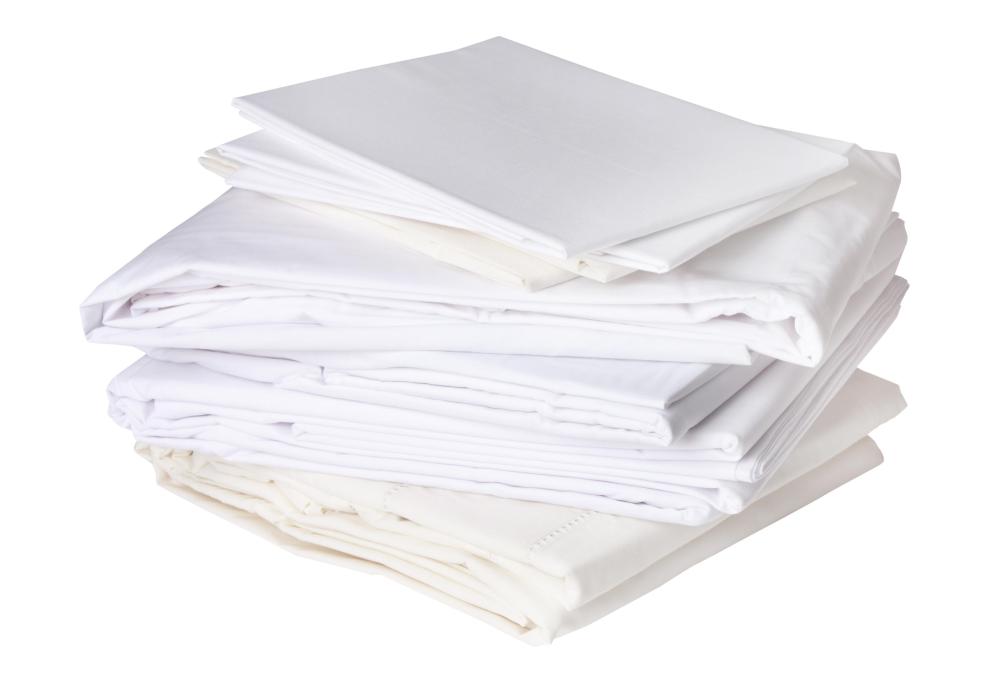At WiseGEEK, we're committed to delivering accurate, trustworthy information. Our expert-authored content is rigorously fact-checked and sourced from credible authorities. Discover how we uphold the highest standards in providing you with reliable knowledge.
What are Bedclothes?
Bedclothes are coverings that go on top of a bed, such as sheets, blankets, pillow cases and comforters. These coverings generally often also include a fitted sheet that has elastic along its edges and goes directly over a mattress. Bedclothes provide warmth and also serve an aesthetic purpose. They can be purchased in different sizes to fit different beds, with King-size, queen-size and twin sizes are all available. Sheets and fitted sheets can also be secured to the bed with clips.
Bedclothes can be made of a variety of materials and come in a vast array of colors and patterns. Cotton, crepe, flannel, jersey, satin, silk, linen and cotton sateen are all used to make bedclothes. Which material to choose is a matter of personal preference, but silk bedclothes may offer a health advantage. Silk causes a rise in hemoglobin when it comes in contact with the skin; therefore silk bedclothes may help boost the body’s immune system. Since silk does not absorb as much as moisture as other materials, sleeping on a silk pillowcase may also decrease facial wrinkles.

During warmer months, however, cotton’s tendency to absorb moisture may make it a better choice. 100% cotton is also one of the softest materials. Cotton sheets and pillow cases with higher thread counts tend to be softer. Cotton blends are a wrinkle resistant option. For superior warmth, heavy down comforters, stuffed with feathers, and flannel sheets are others choices. Organic cotton bedclothes are an alternative for the environmentally-conscious.

One should consider fire safety when arranging bedclothes. Do not allow bedclothes to hang over a heating vent or radiator, as the heat could cause the bedclothes to burn. When bedclothes block vents, heating and cooling bills may rise as well, as air circulation becomes inefficient. Bedclothes for cribs and other types of infant beds can also become a safety hazard. Bedding has been linked to SIDS, or Sudden Infant Death Syndrome. Pajamas with feet are recommended for keeping a baby warm, as soft bedding poses a suffocation risk. Any blankets placed in a baby’s crib or bed should be thin, reach only up to the infant’s chest, and be firmly tucked beneath the mattress. It is also recommended by the American Academy of Pediatrics that babies do not sleep with pillows until the age of two.
AS FEATURED ON:
AS FEATURED ON:















Discussion Comments
@turkay1-- My mom has sleep apnea too, I know it's a terrible condition. It prevents sound sleep. A comfortable bed and comfortable bedclothes definitely help. My mom also uses cotton or a cotton mix. I think whatever your husband is most comfortable with, that's the bedclothes you should use. We bought a memory foam bed for my mom and that has helped a lot. Her body sinks into the foam when she sleeps so she is more comfortable. I think you should buy one if you haven't already.
A sleep tip that the doctor told us is to sleep sideways. It prevents snoring and prevents the tongue from getting in the way of your throat so you breathe better. They also have special pillows that make sleeping sideways more comfortable. Try these tips, I hope your husband gets well soon.
My husband has sleep apnea. Could changing our bed or bedclothes help with his condition? He has all of the symptoms of sleep apnea. His breathing stops two or three times every night, he wakes up coughing and snores. The doctor first asked him to use a mouthpiece but that hasn't helped at all. Now he wants my husband to use a breathing device. My husband doesn't want to sleep with a breathing mask and I understand him. I think that if he were more comfortable in bed, the apnea might lessen. What can I do to make his bed more comfortable? Our sheets and covers are 90% cotton and 10% polyester. Would a different kind be better? I would appreciate any advice.
I'm unable to sleep with any bedding other than cotton. I tend to sweat while sleeping and silk just makes it worse for me. Especially in spring when the AC is not on yet. I feel like I am suffocating in silk bedding. And other materials have harder textures that bothers my sensitive skin. I think I roll around a lot in the bed so I only use 100% cotton for pillowcases, sheets, comforter- everything. It's the only thing that doesn't bother me.
Post your comments